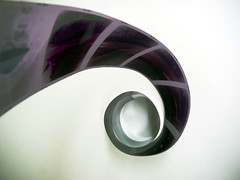A Closer Look at “Limited Editions”
Wow, I didn't expect such a heated conversation to spring from the previous article titled “What Exactly is a Limited Edition Print?“. In that article, I pulled information from my own experiences and learnings to offer up a definition of “Limited Edition” as it pertains to fine art photography today.
Several of the readers offered up their own interpretations and some disputed my explanations. These comments and questions caused me to dig deeper and deeper until I came to the conclusion that a follow-up article was needed. So just as with the previous article, this article is an open discussion. Below you will find new information and perspectives on this topic of limited edition photography.
One commentator really got into the discussion and forced me to rethink some things. The entire discussion is worth a read on the previous article, but here are some key points made by Janne.
Any “Limited edition print” which isn’t actually _limited_ is basically fraud in my view. That includes doing more copies of the same image that aren’t signed; whether different size or not signed is beside the point; just call it “signed edition” or “signed print” if you want to be honest. And “limited” does imply a _small_ number of prints; below a thousand, certainly. Destroying the negative afterwards sounds like a good idea – that is the order of the day for other media that produce limited prints after all (stones are broken; copper plates repolished)
I mean, according to those definitions above there is actually nothing limiting any of you. You can run off numbered prints under your direct supervision in the millions; just rent some time on a newspaper press. And if that is not enough you seem to argue that a slight size difference, or a somewhat different crop, or just not put your signature on it makes it suddenly “not count”.
There’s two points to having a limited print: one is that the buyer knows there really is a _limited_ number of images out there. The other is the concept of the artist actually limiting themselves, and not selling all they could do, in preference of creating a smaller number of pieces with individuality.
…
(via email) Thinking about it one more time, what I'm really objecting to is simply the language. “limited print” has a pretty specific meaning in other graphical arts; what you want to do is completely legitimate and valuable, but uses a different term. It is needlessly confusing to appropiate a term in a neighbouring field and changing its intended meaning. People may legitimately become confused about what you mean, and feel they have been deceived as a result of this.
I'm really grateful for the discussions held with Janne, and I always enjoy academic arguments that cause me to learn new things a see new perspectives.
THE LEGAL PERSPECTIVE
Niels Henriksen brought up the fact that there are several US states which have legal definitions of limited edition prints.
If I remember correctly within the USA there are legal rules to define what is constitutes and limited edition print. While I don’t have the ruling in front of me, I should try and dig it up again, Limited edition prints means that the artists will only produce x number of prints. They do not need to be signed or numbered, but this is ordinarily the practice. Therefore you would not able to sign and number x prints and then sell more unsigned if I am correct. There is provision when producing limited edition prints to have a very small number that will be used a promo pieces and they are identified as such. As a follow up, there are 14 states, I don’t know which ones that have legal definitions of limited edition prints.
I dug around a little more and I saw this reference to the 14 states with legal definitions, but the articles were outdated and links were broken. I have yet to see this actual source, but I'm sure something along these lines exists.
I'm no lawyer and I have a terrible time trying to navigate the law books. If there are any law savvy readers out there, I'm sure we'd all appreciate some clarification or reference to these things.
So bottom line: if you live in a state that clearly defines the term “Limited Edition” with regards to artistic prints, that's going to be your guide. I'll post more on this if I ever get my hands on the references to the state laws.
THE DEFINITION PERSPECTIVE
One thing that became apparent during the conversations in the previous post was that some of us were arguing about the language being used rather than the intent. So let's take a look at the terms “limited” and “edition” in hopes that we can gain some insight.
LIMITED indicates something that is small in range or scope. This one is pretty straight forward, just meaning that there is a finite number of things in question.
EDITION refers to a collection of prints from the same original and usually printed at the same time. So if you print 50 images all at once, those 50 images are part of the same edition. If you print 30 more at a later time (and maybe at a different size or on a different medium) that would be considered another edition not part of the first edition. Wikipedia for more information.
So when we combine “Limited” and “Edition” it implies that a small set number of prints were made from the original at the same time and of the same size, implying that no further prints will be produced.
THE HISTORIC PERSPECTIVE
Limited editions are a byproduct of historic printmaking techniques. Prior to modern photography, artists were limited to a range of printmaking techniques to create multiple reproductions of an art piece. These techniques typically included a plate of some sort that was used to create impressions on the final medium (and most of these techniques are still used today for creating prints). These plates were physically incapable of lasting indefinitely and many were only capable of producing a small number of prints before deteriorating past a usable state. The prints derived from these plates were also usually created at the same time because of the process involved to do so — it just wasn't as feasible to create one at a time based on demand.
And so limited editions were not a marketing ploy to impose scarcity or something that the artist chose to do. It was a burden of necessity based on the technology. The artist would make their prints, number them, and possibly sign them. And that was the end of that.
Here is just one type of printmaking that uses acid to etch a copper plate.
THE MODERN PERSPECTIVE
As technology advanced, so did art. There came a point when printmaking techniques were no longer physically limiting on the number of prints that could be derived from an original — specifically with photography (especially with digital photography).
As the technology allowed for near infinite reproduction of prints, artists began to impose limits on their works as a means of creating scarcity and increasing value. Numbering the multiples provides an indication of scarcity and signatures have become a typical means of identifying the origin of the work while implying that the print is truly from the artist.
So in the most strict sense of the term “Limited Edition” as it applies to fine art photography, prints would need to be produced as an edition (all at once) and no further prints would be produced. To ensure this limit is maintained, the original should probably be destroyed.
Digital technology only clouds the topic because exact replicas of the original can be produced with very little effort. Even scaled digital reproductions of the original bring question as to whether a print derived from that image can truly be called a limited edition. If I print a 3×5 from one of my Flickr photos that was run as a limited edition, did I just create a second edition? And does that break the promise of the first edition?
MY PERSPECTIVE
I truly don't care if what I'm producing is called a “Limited Edition”, a “Signed Print”, a “Limited Signed Print”, a “Special Edition”, etc. The implications of the formal terminology aren't what interests me, so much as the intent of the works I'm creating. Niels Henriksen also made a statement to this that really makes sense to me.
I believe as an artist, unless there are legal definitions within your jurisdiction, it is important to clearly define your use of limited editions and any other prints runs you might be making for different sizes, posts cards, unsigned etc.
In order to avoid confusion or disputes with potential buyers, I'll have to be more careful about the terminology I used to describe my artwork. Clearly, in the digital age things are not so cut and dry as they once were. Again, Janne provided some useful insights to this.
(via email) In a larger context, of course, the whole idea of a “limited print” is a rather bad fit for this medium, as you point out in a later reply.
Doing a limited print run is simply trying to create an artificial scarcity, and it's not clear that anybody at all stands to benefit. I have seen the idea floated of an “artistic back catalogue”, where visual artists simply keep their images available, running new prints according to demand, in much the same way as musicians today can keep their entire back catalogue available for the occasional buyer, and as we can (though regrettably still do not) keep books similarly available on a permanent basis.Trying to go the “expensive and rare” route with copyable media greatly risks backlash, with many potential customers electing to either do an illegal copy, or just search the net for a free image of the subject they're interested in. Most buyers of prints are after all as interested in the subject matter as in that specific image and composition, and there isn't a notable spot on the planet today not well represented by photographs of every caliber, many legally available for free.
YOUR PERSPECTIVE
Once again, I call on the rest of you to offer up your thoughts on this topic. I'm particularly interested in continuing the discussion about “Limited Editions”, but I'm also curious about how modern photographic printmaking should be handled by today's artists and how they should label their work. And yet again, I use the words from Janne to get this discussion started.
(via email) It may simply be that regardless of any definition of “limited”, the viable business approach for most photographers is the same as for musicians, graphical designers and other such groups: If you can't vault into superstardom, your best bet is to create a full body of work and make it available easily and inexpensively. Then rely on the accumulated orders over the entire catalogue and on the secondary services you can offer to create a steady income; rather than trying to create a few breakaway hits.






Cody Redmon
June 13, 2008It’s great to see the e-mail communications on this, they really help explain Janne’s stance more clearly. At first I thought it was just about idealism, but there are definitely some valid points regardless of whether or not I subscribe to them myself. Era, medium, technology, target audience…there are many factors to consider when getting down to the nitty-gritty of definition. It’s good that you introduced the printmaking side of things, as this is where the term ‘limited edition’ really originated. I discussed the topic at length with a local photographer friend of mine who made this same point. He also presented the idea of “Original Works” as it applies to hand-processed prints vs. commercial reproductions. “Original Works” implies more about the work itself than it does the run length (“limited”), but without entering the fray of definition disputes. All you need to do then is limit your run length and you’re complying with both standards and definitions that can’t really be argued. There’s no innate claim of scarcity, but to me I still get that impression because “Originals” are definitely not “Reproductions” and no artist in their right mind would sit in a darkroom and bust out 10,000 hand-made prints of the same image.
This is a bit more about the definition and application of ‘limited” itself, but he noted that there’s often an implied price jump for limited pieces as they become scarcer. If you only have 10 of 50 prints left, those typically cost a bit more than the first ones to sell…but again this is a common practice in that lithographers employ, so there’s that gap again between medium of art and definition of terms.
Thanks again for the great topic, Brian.
Damien Franco
June 13, 2008Wow Brian,
It seems you have opened a much needed can of worms. Throughout observing the ongoing conversation I’ve found myself wondering if “limited editions” should even be an applicable term in the present day as pertaining to photography (especially digital photography). I’m cetainly interested in how this will play out, although I think our photo-blogosphere has little impact towards those higher powers in the elite fine-art realm. I do know of a few film photographers that do hold true to “limited editions” by permanetly archiving their negatives after running thier specified number of prints. That being said, I don’t know that I could ever do that if in twenty to thirty years from now I had a resurgence in interest in my fine-art works. It’s a personal battle that I will probably hold with myself for many years to come.
My Camera World
June 13, 2008It is really good to see how engaged as photographers we are and our willingness to discuss complex topics for which I would suspect if you had a world view there would not be a one size fits all answer.
We all have an approach the suits our style and needs.
As an example, I don’t on purpose use the term limited Edition when selling certain images with limited print runs.
I clearly state, that I sign and number each print as being y/x for images that are larger than 8×10. Should it be damaged while I am living I will replace it and re-sign and number as they originally received, provided I receive the damaged version back.
There will be 2 promo images that are unsigned and numbered that will never be sold.
I have a log of all images I sell, size, series number, persons name and address (if they want)
I also state that I do sell unsigned images that are 8×10 or less never larger, but for the numbered versions there will never be made more than the run I have pre-determined.
The above information as well as instructions for archival mounting and preserving they receive as a printed note on textured paper.
This is just my model and none of the buyers has been concerned or raised any issues.
Niels Henriksen
Brian Auer
June 13, 2008I think a lot of us are on the same page with this topic. Unfortunately, it’s not a widely discussed topic and the inner workings of fine art terminology can be somewhat difficult to decipher when applied to modern fine art photography.
Getting this kind of feedback from the great minds that frequent this site is much appreciated and a very exciting thing to witness.
Robert Charles
February 20, 2009California has very specific definitions and and disclosure statutes. Most important is
section 1742-1744.9 of the Calif Civil Code
https://www.leginfo.ca.gov/cgi-bin/waisgate?WAISdocID=1823304069+0+0+0&WAISaction=retrieve
Unlike literary publishing, visual/graphic arts publishing is very specific about "limited editions" First and foremost is that there is no such thing as a ‘2nd Limited Edition"
https://www.leginfo.ca.gov/cgi-bin/waisgate?WAISdocID=1823304069+1+0+0&WAISaction=retrieve
in section 1740-1742 are the definitions for conducting "fine art" commerce into or out of the State of California: essentially any item selling for $100 or more (exclusive of frame) requires a Certificate of Authenticity that discloses the details and history of any piece of art meeting the above definition.
In particular, in section 1744, the details disclosed for a "limited edition" must state artist, deceased or not, TOTAL NUMBER OF MULTIPLES IN THE EDITION, INCLUDING PROOFS AND:>>>>>
(b) If the multiple is part of a limited edition, and was printed after January 1, 1983, the statement of the size of the limited edition, as stated pursuant to paragraph (10) of subdivision (a) of Section 1744 shall also constitute an express warranty that no additional multiples of the same image, including proofs, have been produced in this or in any other limited edition.
When an image is offered as a ‘limited edition’ the size of the edition is stated, and by that statement guarantees no more impressions of the IMAGE have been, or ever will be created. If you buy a "limited edition" that states the edition to be 500 signed and numbered, and 50 ‘artist proofs’ you are guaranteed that IF you purchase one of the edition, you are buying one out of 550: forever!
10 years from now, you will still own one of only 550 ‘multiples" of that IMAGE. Creating 2nd editions is a MAJOR breach of trust within the integrity of the fine art industry.
California’s statutes are very well written with the purpose of providing a potential purchaser with all available information so as to make an informed decision to purchase or not.
Jeni Gray
February 1, 2010I totally agree with the last paragraph entered from “Janne” : …”create a full body of work and make it available easily and inexpensively.”
I have been taking pictures for fun and income for over thirty years. I have given a lot of thought to Limited Editions, Numbered Editions, and Special Editions, but didn’t pursue it wholeheartedly.
As the market changes I change how I sell my work. So limiting of any kind is out of the question for me now. I create a large body of my work on greeting cards which sell well in a down market.
Trends change fast and artists need to be flexible.
I agree that Limited Editions should be limited to that image, no matter what size, signed, numbered or not. Rules are good, and it sounds like there are laws in place as well.
But more importantly what we really want is to share (sell) our work. I would like mine to be limitless and valuable. What can I say – I want it all.